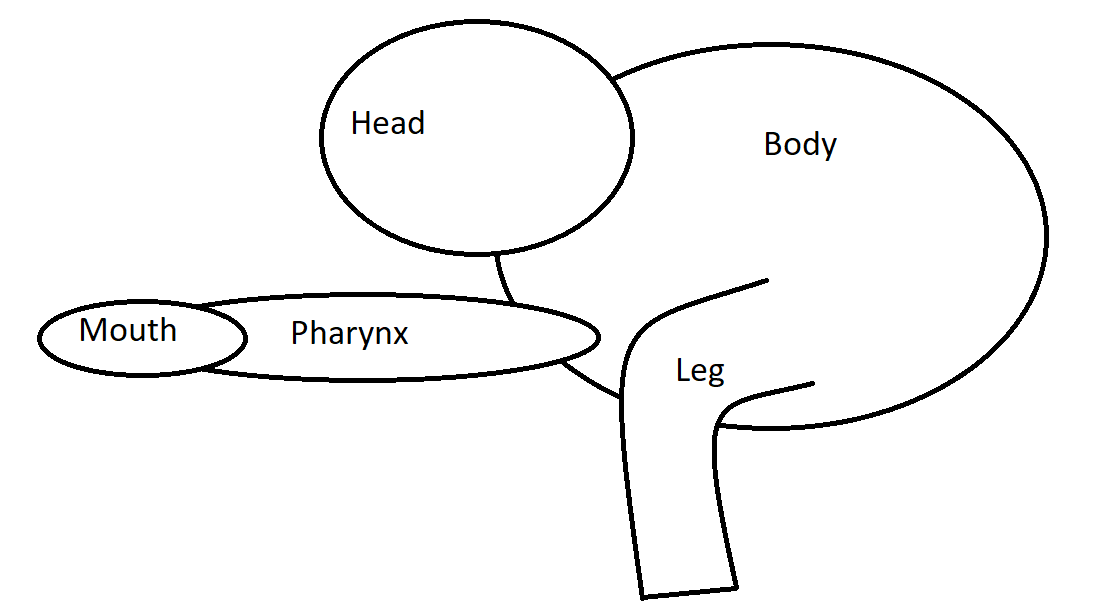The creature is a soft-bodied animal roughly the size of a human, that resembles a wing-less bird in its stance. It has no neck or eyes, and its mouth is at the end of a pharynx attached to the torso. Physiologically, it is similar to velvet worms, but with a vertebrate-like circulatory system. It has a brain which exists in the head. The creature has existed in some form for long enough that if the head had no use, it would be lost through natural selection. So, what features could the head have that would make it better to have than to not, and thus would prevent evolution from removing it?
-
$\begingroup$ How does it eat? Does it have to reposition its entire body to take bites? $\endgroup$– AlexanderCommented Apr 1, 2021 at 20:50
-
$\begingroup$ It can reach the ground with its pharynx, allowing it to eat while standing $\endgroup$– Ichthys KingCommented Apr 1, 2021 at 20:56
-
2$\begingroup$ You said the brain is in the head. Isn't that a good enough reason to keep the head? $\endgroup$– chasly - supports MonicaCommented Apr 1, 2021 at 21:01
-
2$\begingroup$ It would help if you drew a rough sketch of the creature. $\endgroup$– chasly - supports MonicaCommented Apr 1, 2021 at 21:03
-
2$\begingroup$ Joining on the request of some drawing - This sounds very intriguing, butI can't understand how a creature could at the same time be "similar to velvet worms" (which crawl like a caterpillar or slug, I think?), have a "wing-less bird's stance" (so, bipedal? but is it like a velociraptor, an ostrich, a dodo or a penguin? they are all flightless but winged to an extent), or have a head but "no neck" and also have a phyrynx growing from its torso (a velvet worm doesn't have a torso, right? and where do the head attach to the body?) $\endgroup$– G0BLiNCommented Apr 1, 2021 at 21:31
2 Answers
Sexual desires
Why do male peacocks have such big and colourful feathers? Or human females (large) breasts at all times? Why do stags grow horns for mating season?
There are a lot of body parts with functions that aren't useful or have a usefulness that could've been implemented in a better way. Their main function is to signal sexual availability and virility.
The head of your creature might just be something left over because it because a desirable trait in both males and females. Although wyes might still adorn it for the ability to look around and still have ears for example, these could be transferred to more specialised parts of the body. The main reason it's still there is because the creatures only reproduce with the creatures that have beautiful heads.
Animals have heads because once they develop a nervous system, the optimizations and efficiencies of ever-larger nervous systems tend to put one major node somewhere. Everything else attaches there (or fans out from it, tree-style).
This is usually at the end of an organism, somewhere defensible. All the major sensory organs will migrate there if they didn't first show up (it's the place with the highest bandwidth in the whole organism).
A mouth or nose may not show up on this head, there are other plausible locations for those things (unless the general architecture of the creature strongly implies putting those there as well).
You will end up with a head. You won't have an easy time explaining the lack of one either if that's your goal. The head can change shape certainly, it can migrate down into the torso so that any neck is vestigial (to armor things up perhaps), but it just won't go away.
This isn't even a bilateral symmetry thing. One would expect similar from a radially symmetrical organism.
-
$\begingroup$ But why would the brain be in the head, rather than in the body as in arachnids? $\endgroup$ Commented Apr 1, 2021 at 21:51
-
$\begingroup$ @IchthysKing because in arachnids the head and thorax fused together in what's known as a cephalothorax.crustaceans also have this trait. $\endgroup$ Commented Apr 1, 2021 at 23:44
-
$\begingroup$ @IchthysKing an organism wants the primary sensors to be in close proximity to the processing so that they have tighter feedback on the flight or fight. Things that affect if an organism lives or dies, eats or starves. $\endgroup$ Commented Apr 2, 2021 at 0:10
-
3$\begingroup$ @GaultDrakkor Though, you can kind of argue that for actuators as well. Hence, I introduce you to the perfect lifeform: the octopus. $\endgroup$– DKNguyenCommented Apr 2, 2021 at 1:37

